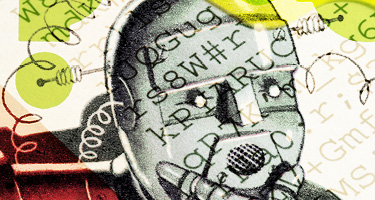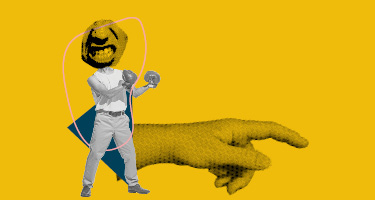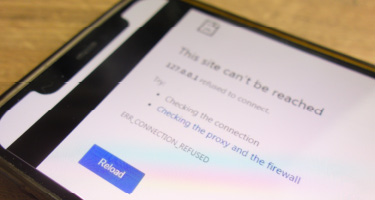In October 2017, Pacific Gas & Electric’s poorly maintained, poorly operated equipment sparked some 14 separate wildfires in Northern California. The blazes included the Tubbs Fire, which grew to become the most destructive wildfire in California’s history to that point. It burned so quickly that many residents had no chance to escape; 22 lives were lost. Less than two months later, on December 4, Southern California Edison’s faulty equipment ignited the Thomas Fire, which burned 281,000 acres in Ventura and Santa Barbara Counties, destroyed hundreds of homes, displaced thousands of residents and businesses and caused more than $2 billion in damages.
A month after that, heavy rains fell onto the Thomas Fire’s burn scars in the hills above Montecito, triggering a massive debris flow that caused catastrophic property damage and killed 23 people, including five children.
On November 8, 2018, the Camp Fire was ignited by PG&E’s ill-maintained transmission line in Butte County, north of Sacramento. High winds and dry conditions propelled the blaze into an urban firestorm in the foothill town of Paradise, trapping and killing 85 people. The same day, SCE’s broken electrical equipment at the Santa Susana Field Laboratory, northwest of Los Angeles, sparked the Woolsey Fire, which burned nearly 97,000 acres, destroyed hundreds of homes, displaced thousands of residents and businesses and killed three people.
This catalog of horrors represents just a few of the devastating utility-caused wildfires that have ravaged California in recent years. Indeed, in just the last decade, electrical infrastructure has ignited at least eight of the 20 most destructive wildfires in the state’s history, and the trend shows no sign of abating or reversing.
The utility infrastructure in the Golden State is old. The publicly traded, for-profit utility companies are responsible—both morally and legally—for maintaining their lines to guard against such catastrophic fires. Sadly, these regular fires, caused by long-term mismanagement, are the product of these companies prioritizing shareholder dividends and C-suite compensation over the safety of California and its residents. Further, in early 2022, the state auditor reported to the legislature that regulators were failing to hold electric utilities accountable. That report, California’s Oversight of the Efforts by Investor-Owned Utilities to Mitigate the Risk of Wildfires Needs Improvement, found that the recently formed Office of Energy Infrastructure Safety approved utilities’ wildfire-prevention plans even when they were “seriously deficient.”
Tens of thousands of miles of bare power lines remain exposed in areas of high fire threat, leaving power shutoffs as the only option and last resort to stop wildfire ignition. According to the audit, the power companies’ efforts to “harden their grids” and make their equipment more fire-resistant are insufficient, and neither the utilities nor their regulators have taken steps to ensure that priority is given to upgrades in areas at the highest risk.
The old, often decrepit infrastructure will surely spark fires for years to come given that the utility equipment has not been responsibly managed for decades, and the pace of “grid hardening” has been slow in recent years. The inevitability of wildfires sparked by electrical equipment, and the expectation that utilities will continue to deny liability, means California residents and businesses must be prepared to litigate to obtain compensation for seemingly unavoidable damages.
Considerations for Liability Workup Against Defendants
The Southern California Fire Cases coordinated proceeding (JCCP 4965) presents an example of how a unified litigation approach can create opportunities for concessions as well as leverage for a large, diverse plaintiff group against utilities. Liability was strongly contested by Southern California Edison for years. While the utility issued public statements in the fall of 2018 admitting that its equipment was associated with an ignition point of the Thomas Fire, it denied responsibility for a second, separate ignition point, which it then argued was to blame for the lion’s share of fire damage, including the deadly debris flows that decimated Montecito.
SCE also cross-complained about the debris flow against various public entities, including the County of Santa Barbara and CalTrans, alleging that their infrastructure was negligently maintained or had otherwise failed, causing or contributing to the damage from the mudslide. These allegations threatened to cause significant confusion for any jury that would later hear a bellwether case at trial.
Indeed, in just the last decade, electrical infrastructure has ignited at least eight of the 20 most destructive wildfires in the state’s history."
Yet, by early 2021, at the height of the pandemic, SCE had agreed to a settlement protocol that included an acceptance of liability and a damages-only adjudication that would be available to any plaintiff who was coordinated into the JCCP, including all debris-flow victims. Through the protocol, thousands of claimants had the opportunity to resolve their cases through traditional mediation or binding mediation while preserving the right to a damages-only jury or bench trial at the plaintiffs’ election. The protocol also required SCE to maintain a specific pace in scheduling mediations with plaintiffs who opted in.
The journey to such an outcome required a unified workup of liability and all available damages, including punitive damages. Our firm, Panish Shea Boyle Ravipudi LLP, served as court-appointed co-lead counsel and, alongside other members of the plaintiffs’ executive committee, served extensive written discovery and propounded hundreds of thousands of documents from SCE. In excess of 160 witness depositions were taken between 2018 and 2020; more than 20 experts were retained to prove liability and were meticulously consulted in preparation for discovery and depositions.
Even as the pandemic shuttered businesses around the world, trial preparation remained paramount. Plaintiffs pressed forward by working with a court reporting company to develop a remote video deposition platform to ensure that SCE’s defense team would continue producing witnesses and to conduct depositions and courtroom hearings remotely. These efforts were made against the backdrop of a further pressure point for the utility: namely, that a verdict determining that SCE was negligent in maintaining its equipment would affect its ability to pass through wildfire damages to rate payers. For these reasons, a unified focus on getting to trial resulted in a strong bargaining position for the plaintiffs.
Considerations Regarding Damages in Wildfire Cases
With an eye toward future wildfire litigation, it’s important to consider the damages available to wildfire victims and how best to prepare to prove those losses from the outset. Of note, the law in California provides that in a property damage claim, the general rule is that the plaintiff may recover the lesser of 1) the diminution in the property’s fair market value, as measured immediately before and immediately after the damage; or 2) the cost to repair the damage and restore the property to its pre-trespass condition, plus the value of any lost use.
Notwithstanding this general limitation, if a plaintiff has a “personal reason” to restore the property, the plaintiff may recover the restoration costs even if such costs exceed the diminution in value. Restoration costs may be awarded “even though they exceed the decrease in market value if “there is a reason personal to the owner for restoring the original condition” (Rest.2d Torts, § 929, com. b, at pp. 545-546) or “where there is reason to believe that the plaintiff will, in fact, make the repairs” (22 Am.Jur.2d, Damages, § 132, at p. 192).”
Diminution in value (DIV) typically yields less overall value than a claim to rebuild or restore, particularly when there is a total loss of the main dwelling or structure on the property. The defendant utility may attempt to reduce its exposure by arguing that the plaintiff is limited to DIV because he, she or they do not have a sufficient “personal reason” (e.g., the property was an investment and not the plaintiffs’ primary residence) or because he, she or they have not demonstrated a “genuine intent” to rebuild (e.g., progress toward the restoration is characterized as insufficient). A thorough working knowledge of what must be shown under the law is critical to prepare a case for trial or mediation.
Plaintiffs who have sustained damage to their real or personal property due to a utility-caused wildfire are also entitled to compensation for loss of use (i.e., the fair market rental value of the property as it existed before the fire during the period it cannot be used); annoyance, inconvenience and mental anguish, which amount to emotional distress damages for the loss of use and enjoyment of the property; and certain post-verdict damages, including attorneys’ fees and certain costs in connection with the cause of action for inverse condemnation. These damages remain separate from any negligence-based causes of action, such as those for personal injury or wrongful death, and for which other noneconomic demands may be pursued.
In sum, California’s future is guaranteed to feature more frequent and devastating utility-ignited wildfires. It is equally certain that plaintiffs will be forced into litigation to obtain compensation for losses they suffer. Despite their nature as “mass tort” cases, these claims must be worked up with an eye toward trial on liability and a strong working knowledge of the remedies available to victims.
Panish | Shea | Boyle | Ravipudi LLP partner Rahul Ravipudi serves a Co-Lead Counsel in the Southern California Fire Cases litigation (JCCP 4965) as well as Co-Lead Counsel (alternate) in the Woolsey Fire litigation. Named a 2023 Best Lawyers Mass Tort/Class Action - Plaintiffs “Lawyer of the Year” in Los Angeles, Rahul has built a reputation of holding utility companies accountable—recovering hundreds of millions of dollars for clients who have experienced catastrophic harms and losses due to utility-caused wildfires. Rahul regularly meets with members of the California legislature and other safety advocates to discuss wildfire prevention through utility companies spending their profits on improving and maintaining their infrastructure to prevent future disasters.
Panish | Shea | Boyle | Ravipudi LLP attorney Lyssa A. Roberts has recovered hundreds of millions of dollars for wildfire victims in California and serves as Liaison Counsel in the Southern California Fire Cases (JCCP 4965). A member of the American Board of Trial Advocates as well as the California and Nevada Bar Associations, Lyssa has been named in The Best Lawyers in America® since 2019 in Personal Injury Litigation - Plaintiffs and specializes in the areas of personal injury, wrongful death, premises liability, professional negligence, products liability, wildfires and environmental torts.






























